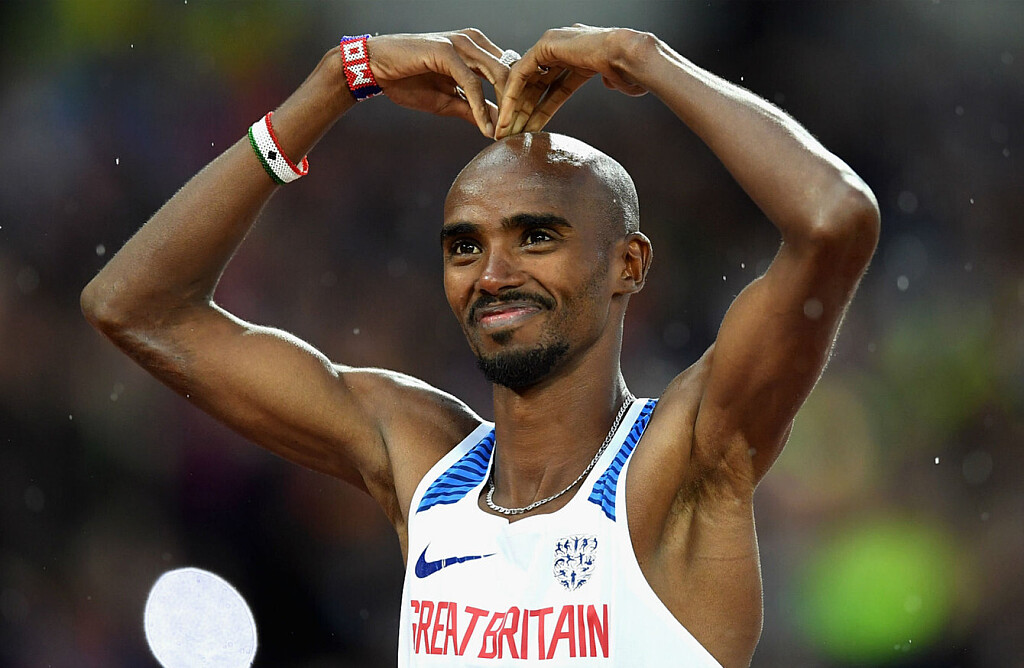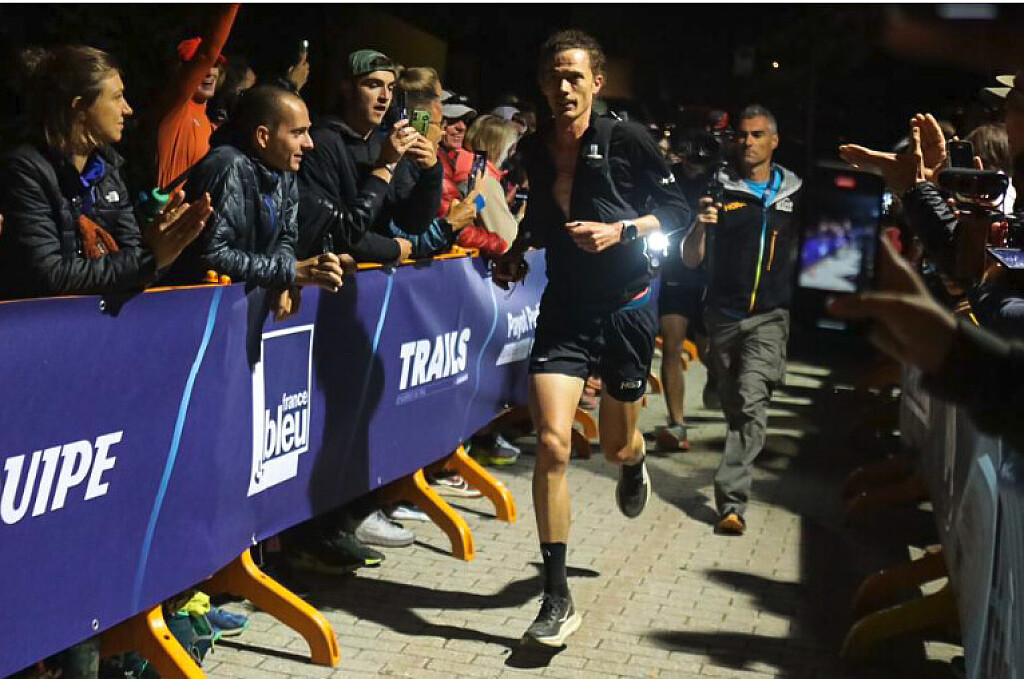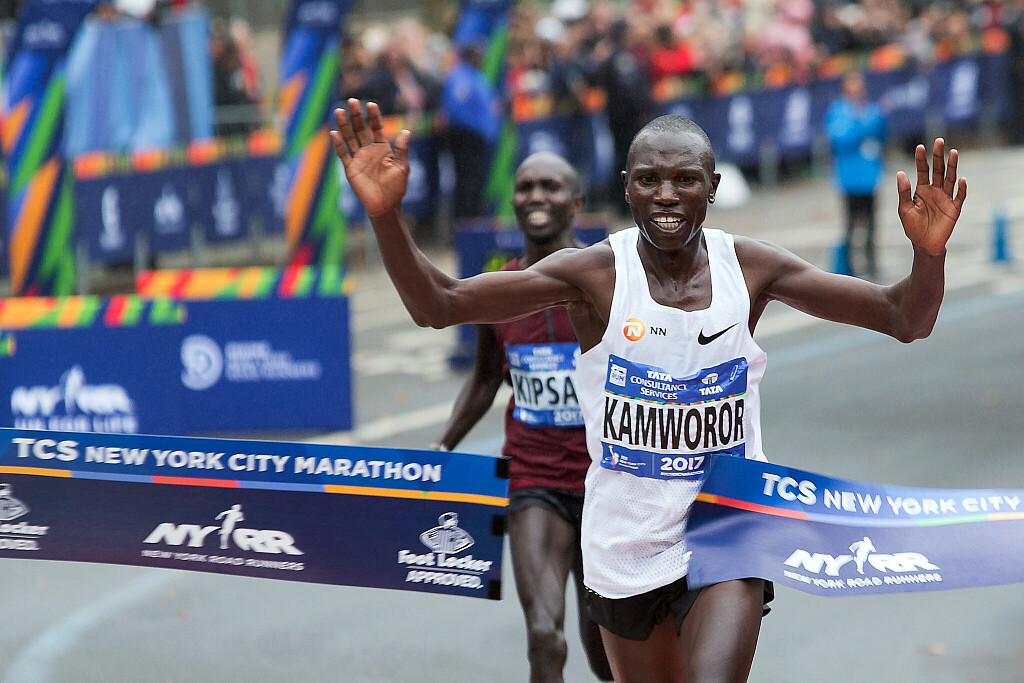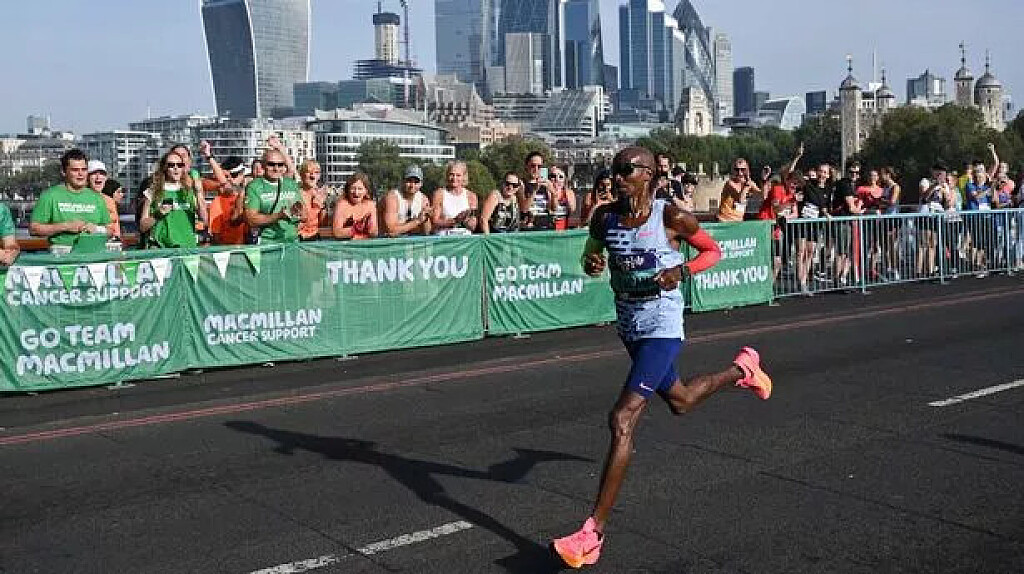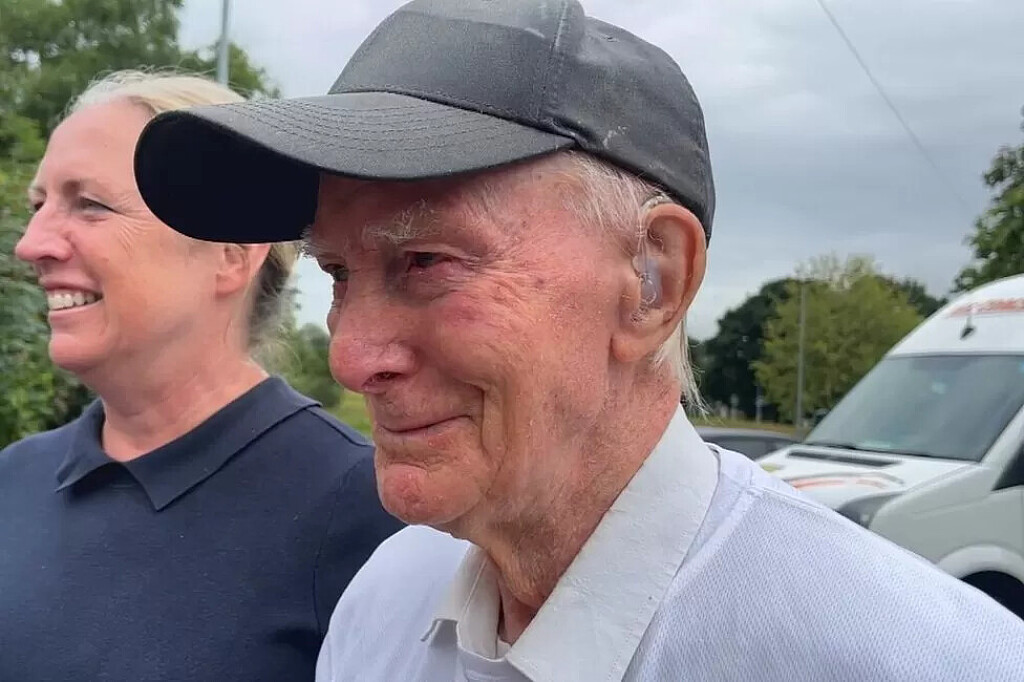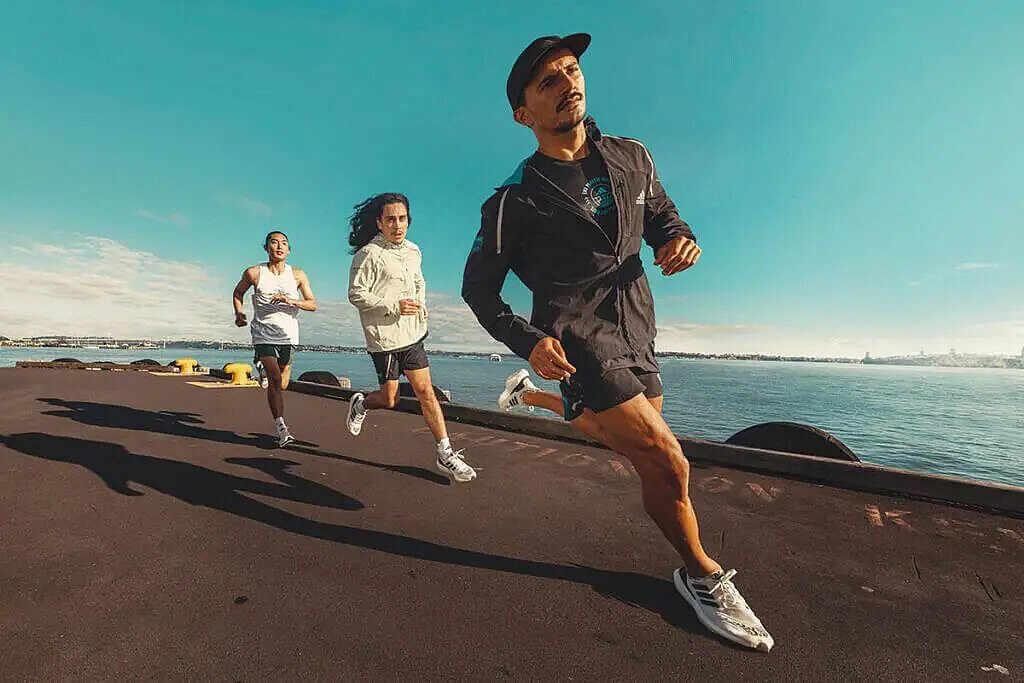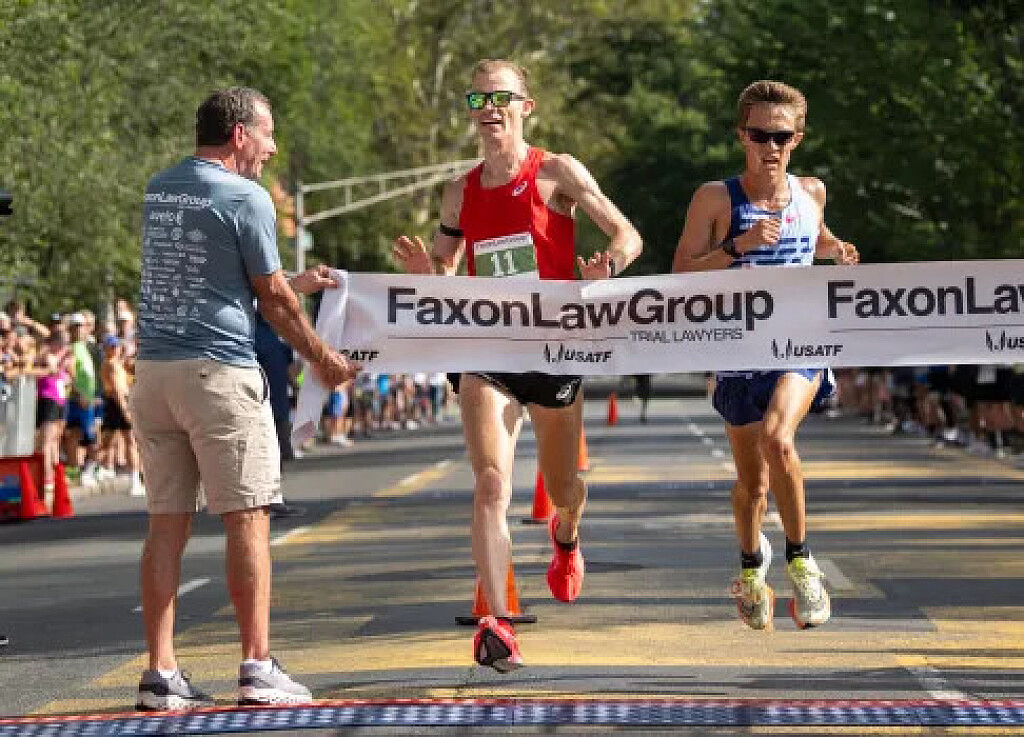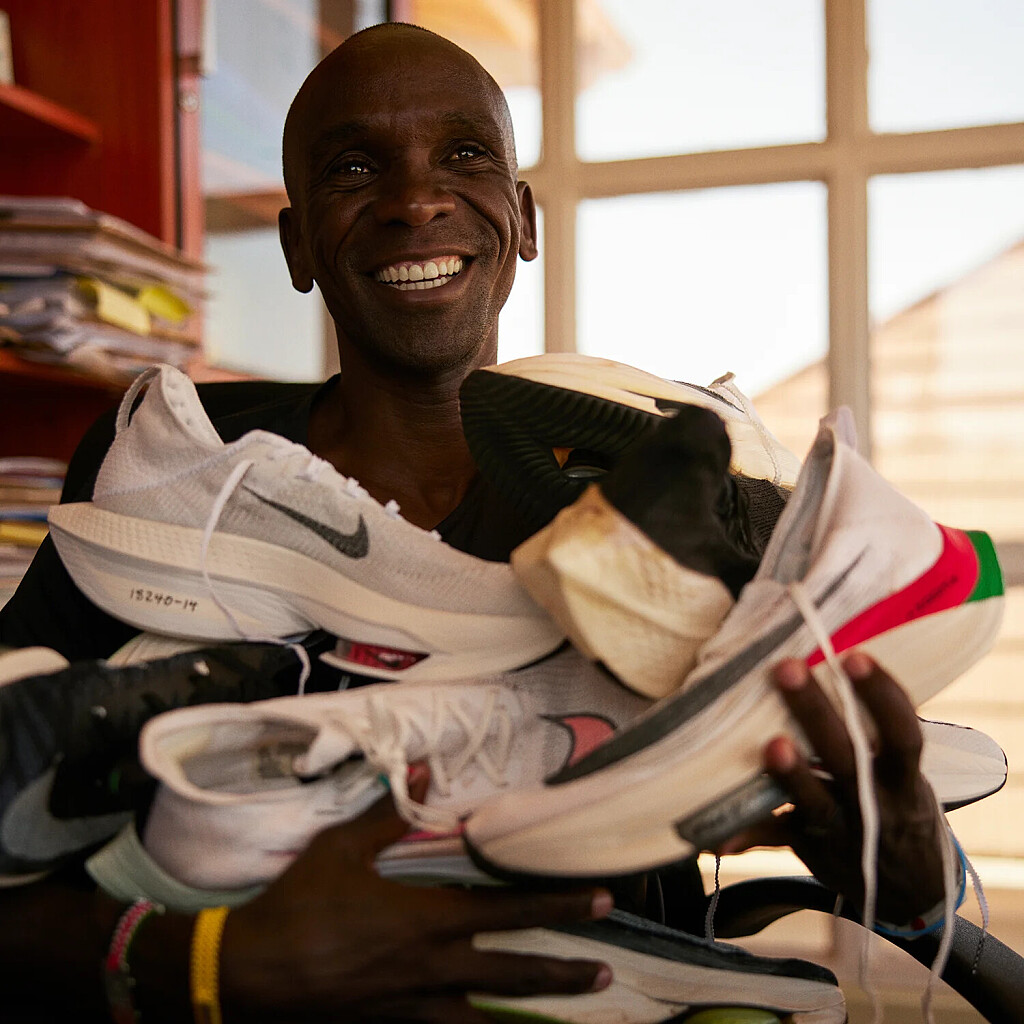Running News Daily
Top Ten Stories of the Week
9/9/2023
These are the top ten stories based on views over the last week.
Mo Farah has had an amazing career
Sir Mo Farah is a British-Somali who just ran his last race. Mo Farrah on Sunday (Big Half) finished fourth clocking 1:02:43 for the half marathon.
Let’s take a quick look at his career. After finishing second in the 10,000 metres at the 2011 World Championships, Farah had an unbroken streak of ten global final wins (the 5,000m in 2011, the double in 2012, 2013, 2015 and 2016, and the 10,000m in 2017). The streak ended in Farah's final championship track race, when he finished second to Ethiopia's Muktar Edris in the 2017 5,000 metres final.
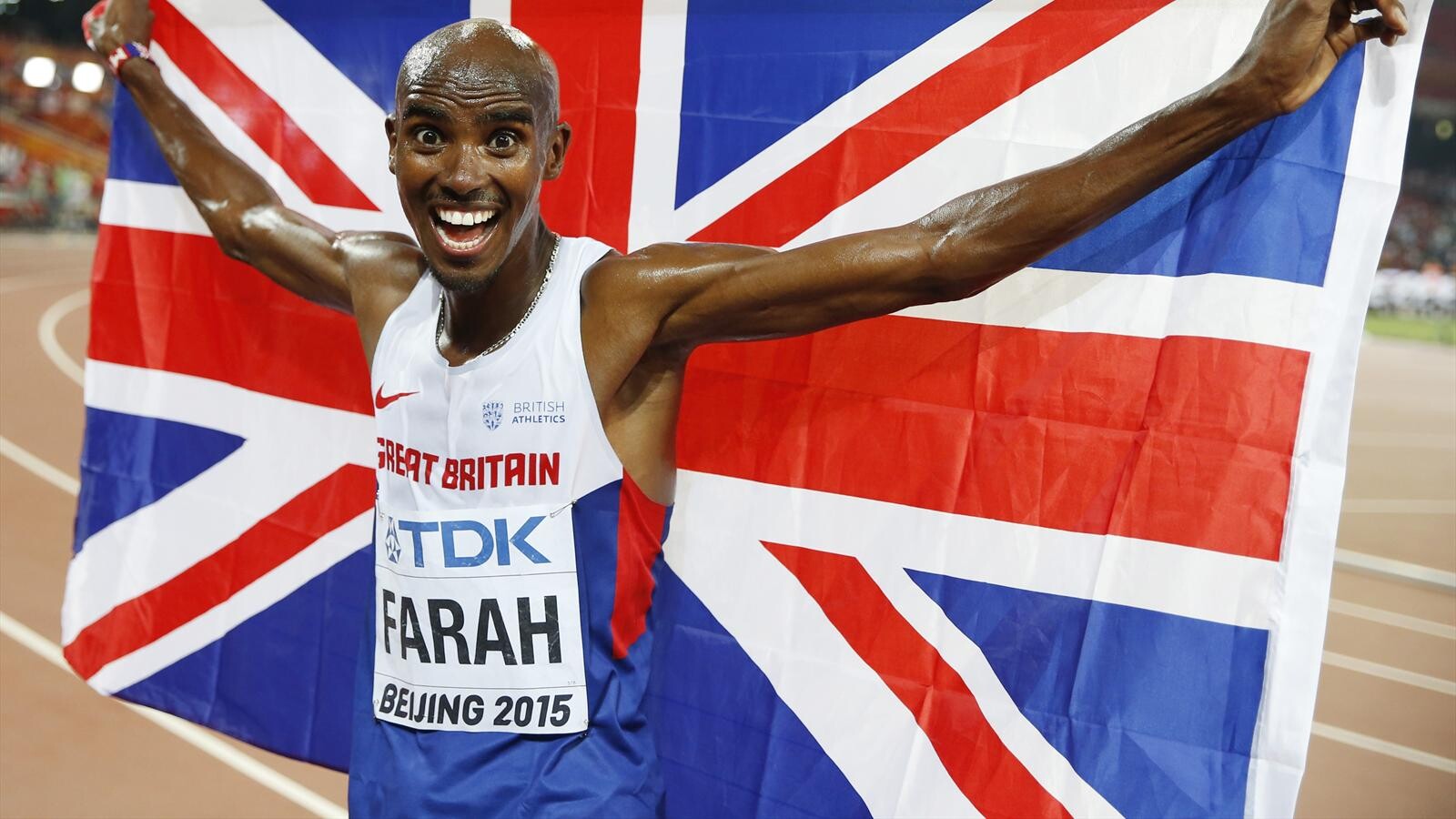
On the track, Farah mostly competed over 5,000 metres and 10,000 metres, but has run competitively from 1,500 metres to the marathon. In 2017, he indicated his intention to switch wholly to road racing following victory at his final track race, the 2017 IAAF Diamond League 5,000 metres final.

He won the 2018 Chicago Marathon in a time of 2:05:11, a European record. His running style has been described as bouncy and tactical, which he has attempted to alter for a more efficient and energy-saving stride pattern, especially in the longer distances. Farah runs distance races tactically, a style which is aided by his quick sprint finish.
Born in present-day Somalia, the then Hussein Abdi Kahin was trafficked from Djibouti to London under the name of another child, Mohamed Farah, at the age of nine where he was forced into child labour. He adopted the name as his own thereafter, becoming a British citizen.
He ran for Newham and Essex Beagles athletics club, training at St Mary's University College, Twickenham from 2001 to 2011. Farah is the European record holder for the 10,000 m, and two miles, the British record holder for the 5,000 m, the British indoor record holder for the 3,000 m and the current world record holder for the one hour run and indoor world record holder for the two miles.
Runners and most everyone has gotten involved in crypto. Here is a good place to start: Crypto-plinko
Farah was the first British athlete to win two gold medals at the same world championships. His five gold medals at the European Athletics Championships make him the most successful athlete in individual events in the championships' history.
(09/05/23) Views: 1622023 UTMB Men’s Race
After a history of struggling with UTMB, the American men showed up this year with Jim Walmsley and Zach Miller (pre-race interview) taking the top two-spots on the podium. Two vastly different racers with different approaches to the event, the two were able to push each other from start to end, with Walmsley’s ever-consistent pace finally winning out in the end with a new course-record time of 19:37:43. But with a stacked field, with nine of last year’s top 10 back for another crack at the race, and last year’s champion Kilian Jornet out with injury, it was anyone’s bet throughout most of the race of who would come out on top.
There’s never a non-chaotic start to UTMB, and this year was no different. With nerves and excitement running high, it was France’s Arthur Joyeux-Bouillon (pre-race interview) who led at Saint-Gervais, 21 kilometers in, with the entire rest of the field hot on his heels. But as darkness fell on the race and the kilometers ticked by, several distinct groups began to form. Coming into Les Contamines, 32 kilometers in, it was Zach Miller, Jim Walmsley, and the U.K.’s Tom Evans (pre-race interview) bunched up and running together. It looked like there would be the potential of a repeat of the Miller-Evans bromance from 2022, with the addition of Walmsley as a third. Frenchman Mathieu Blanchard (pre-race interview) and Petter Engdahl (pre-race interview), a Swede who lives in Norway, teamed up just a minute behind the leading trio, and the rest of the top-10 men came in within five minutes of the leaders.
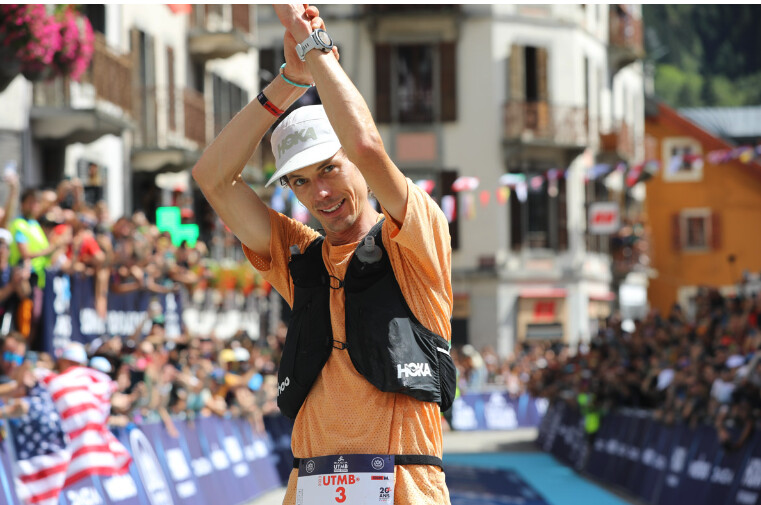

By Col du Bonhomme at 44 kilometers, it was clear that Walmsley was there to put his mark on the race. Miller doggedly hung on 30 seconds back, and Evans came through another 30 seconds in arrears, looking decidedly worse than the two men in front of him. France’s Germain Grangier (pre-race interview), Blanchard, Engdahl, and Joyeux-Bouillon continued to run together just eight minutes off the lead.
The head of the race remained amazingly consistent over the coming kilometers to Courmayeur, 81 kilometers into the race. Walmsley led Miller by a handful of minutes, Engdahl and Grangier followed, running close to each other in third and fourth, at under 20 minutes back after Evans decided to call it a day. Joyeux-Bouillon and Blanchard stayed within half an hour of the leader in fifth and sixth.
Ever the aggressive racer, Miller made his move before Arnouvaz, 99 kilometers in. He came through the checkpoint leading a fatigued-looking Walmsley by two-and-a-half minutes. Many wondered if this was just another instance of Walmsley taking the early race out too hard and paying for it later. Grangier, Joyeux-Bouillon, and Engdahl all came through the checkpoint within 30 minutes of Miller, still well within striking distance if either of the two Americans fell back. The rest of the top-10 men also remained close, with a large group containing New Zeakland’s Scotty Hawker, France’s Thibaut Garrivier, Blanchard, Switzerland’s Jean-Philippe Tschumi, and Germany’s Hannes Namberger coming in hot and fast.
Coming over a dark and foggy Grand Col Ferret at 103 kilometers, Miller extended his lead to nearly four minutes, but Walmsley looked determined and seemed to have found a second wind. Grangier continued to hold strong just 12 minutes behind the leader, and the chase pack of the rest of the top 10 remained relatively unchanged with several of the men teaming up to run the final kilometers to daybreak together.
It’s always a question of when the actual racing at UTMB starts. That is, when do runners make their move and hope that it sticks? Coming into Champex-Lac at kilometer 126 on Saturday morning, it was starting to seem like perhaps Miller’s early move might be the one that worked for the American. With an 11-minute gap over Grangier and Walmsley, who were now running together, Miller looked strong and focused. But there was still a lot of racing to do, and a lot of mountains between him and the finish.
Whether Walmsley was actually in a spot of bother in the later hours of the night, or if it was all part of his strategy to hold back until daylight, everything changed when the sunlight lit up the Alps. By kilometer 139 at La Giète, he’d whittled his gap to Miller down to two minutes, and by Trient six kilometers later, he’d moved back into the lead of the race, a position he wouldn’t relinquish. Grangier continued to run in third, with fourth, fifth, and sixth place, Joyeux-Bouillon, Blanchard, and France’s Ludovic Pommeret, all moving together 44 minutes back from the battle up front.
With the kilometers ticking by, Walmsley’s lead only continued to grow. At kilometer 154 at Vallorcine, he was more than 13 minutes ahead of a struggling Miller. Seven kilometers later at Tête de Béchar, the gap was up to 16 minutes. From here, it would be just one more climb up to La Flégère before the course tipped downward to Chamonix. Grangier maintained his third place up the final climb, with Blanchard in fourth and Pommeret in fifth, more than an hour back on the leader. Garrivier ran in sixth, while Hawker and Joyeux-Bouillon were seventh and eighth, 92 minutes back from the lead.
Once on the final descent, there was no touching Walmsley, and one can only imagine the thoughts and emotions that must have been going through his head. After five attempts at the race, the ultimate student of the course had finally figured out how to put together the race everyone thought he was capable of. He crossed the finish line to huge cheers from the crowd with a time of 19:37:43, breaking Kilian Jornet’s course record of 19:49:30. Wiping away tears while receiving congratulations from past UTMB champion François D’Haene, it was clear how much this victory meant to him.
Fellow American Miller came across the line in second with a time of 19:58:58, looking completely spent. This was his best finish during what can only be called an extended relationship with UTMB starting in 2016. Granger completed the podium with a 20:10:52.
Blanchard, last year’s second-place UTMB finisher, ended just off the podium in fourth. Maybe one of the more impressive results of this years race was of Pommeret in fifth. The 48-year-old masters athlete, who was the 2016 UTMB champion and 2022 TDS winner, showed that age really is just a number. The other surprise in the top 10 has to be Tyler Green, the American who made a late race move to finish in seventh. He didn’t move into the top 10 until Tête de Béchar, 161 kilometers in.
Race favorite Petter Engdahl withdrew at Champex-Lac, 126 kilometers into the race.
(09/03/23) Views: 129Eszter Horanyi I run far
Fast times at the third annual KATA Double 15k in Thika Kenya
The third edition of the kenya double road race was held today 2nd September 2023 at kenya athletics training academy (KATA) in Thika kenya. This also replaced the monthly KATA Time Trial for September.
On the chilly morning, the weather was perfect for a great race, runners started arriving at the academy as early as 6am for this mind blowing and challenging event.
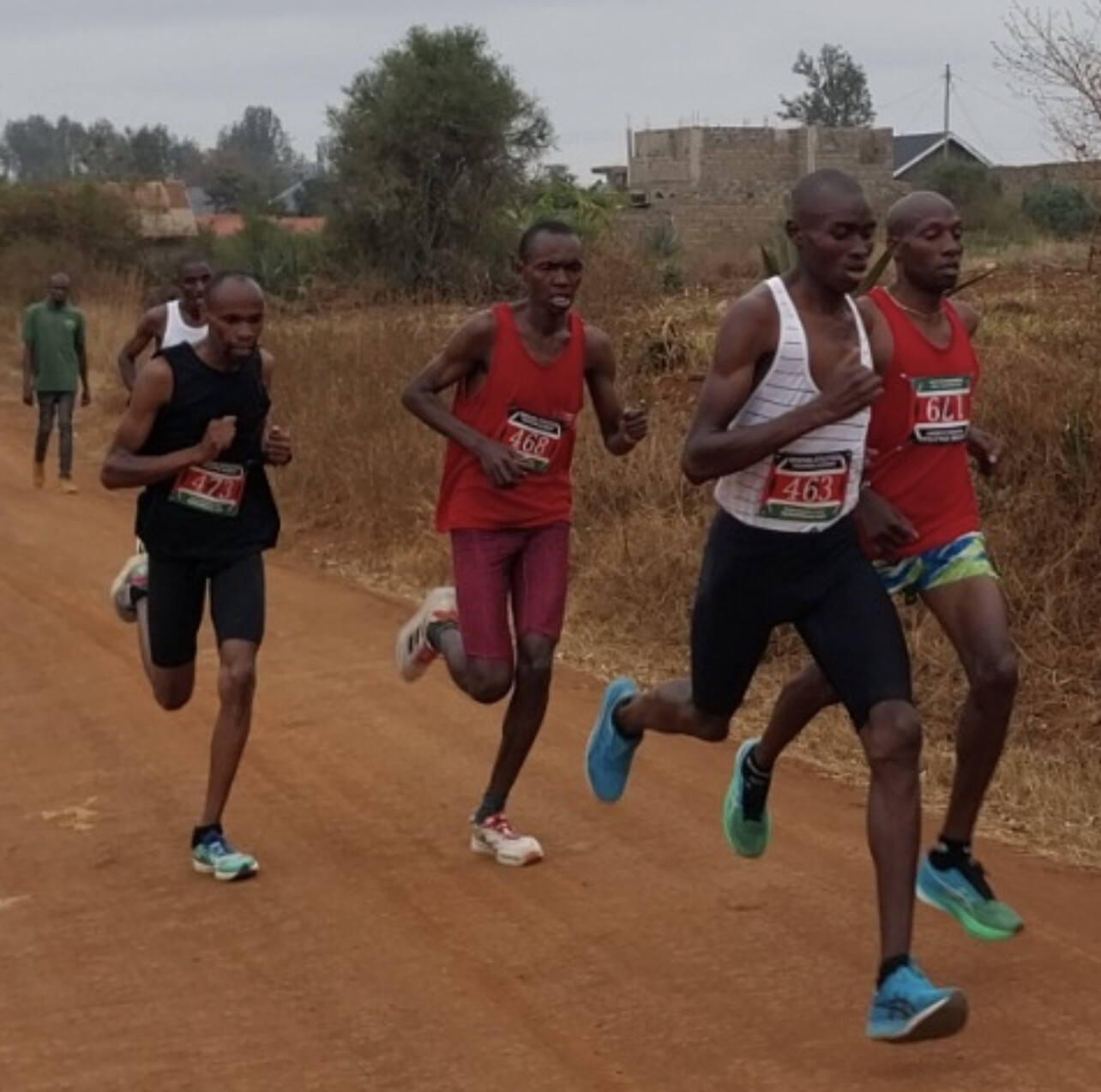
Our race organizers had worked tirelessly to make sure that the event was ready on time under the eye of the race director and academy manager Florence Kimiti. and the kata team working hand in hand.
At 9.am Kenyan time the race started, and all the favorite runners were on the leading group making sure that they have an eye of what’s going on, race Favorite Bernard Musau took charge after the 3rd kilometer and went ahead to win the first leg in 29:44, Nahshon Ndegwa come in second in 30:26 and job Kamonde run 30:27 to finish 3rd.
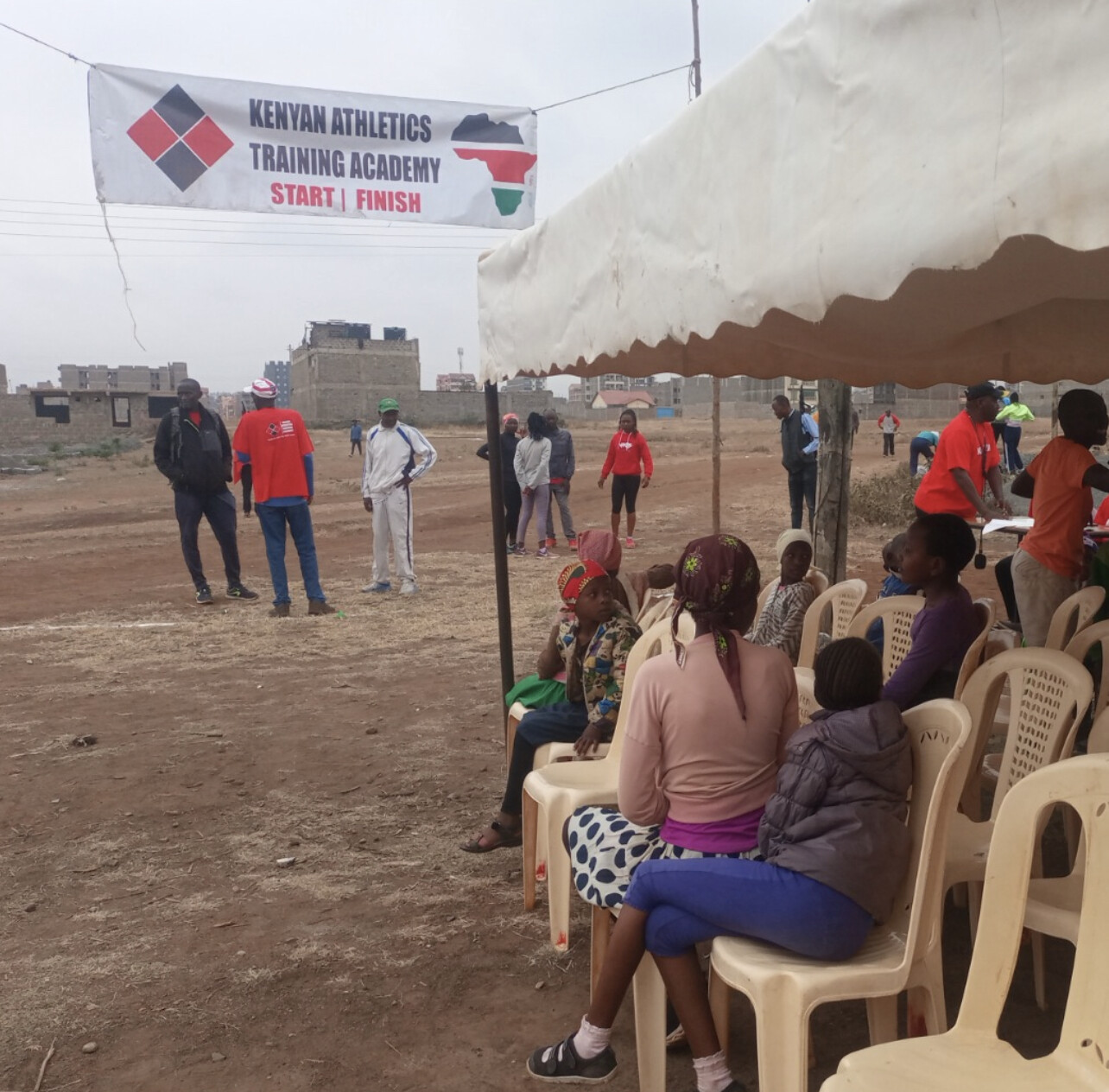
In the women race, it was similar to men race, the one horse race saw Miriam Chepkemoi 34:35 dominated the race from gun to tape, Kellen Waithira came in 2nd in 35:37 and Karen Chepkemoi hold on to the 3rd in 37:14.
During the halftime break, it was the time for bob Andersons kid cup mile which saw amazing talent from the upcoming kids, in the boys race Davis Wanjihia won the race in 6:46, Benjamin Ndaro was 2nd in 6:55 while Lewis Mburu sealed the podium in 7:03. The girls was won by 11yrs old purity Wambui took the honors I 6:33, Emma Elianah was 2nd in 7:30 and Abigail Imali came 3rd in 7:39 to seal the podium.
After the break , it was time for second leg and saw Bernard fired up as he destroyed the field from the gun and won easily in 14:48 (his total time of 44:32 ties the 3rd best time time ever) his opponent job Kamonde run 15:02 and Raphael Gacheru ran 15:08 to third place after fifth place in 10km.
Miriam Chepkemoi final time was 51:33 which is the 5th best female tine ever. 40-year-old Gabriel Kahura clocked 47:06 which is the best time ever for 40 years plus.
The race had a huge success and runners loved the new challenge in the double racing.
(09/02/23) Views: 122
Great North Run men's elite runners in full
Elite field of 50 runners includes half-marathon world champion Geoffrey Kamworor, making his Great North Run debut, and 5,000-meter world champ Muktar Edris - who named his son after Sir Mo.
With just days to go before the world-famous Great North Run kicks off from Newcastle, organizers have revealed the full line-up of the elite male athletes from around the world who are set to lead the way.
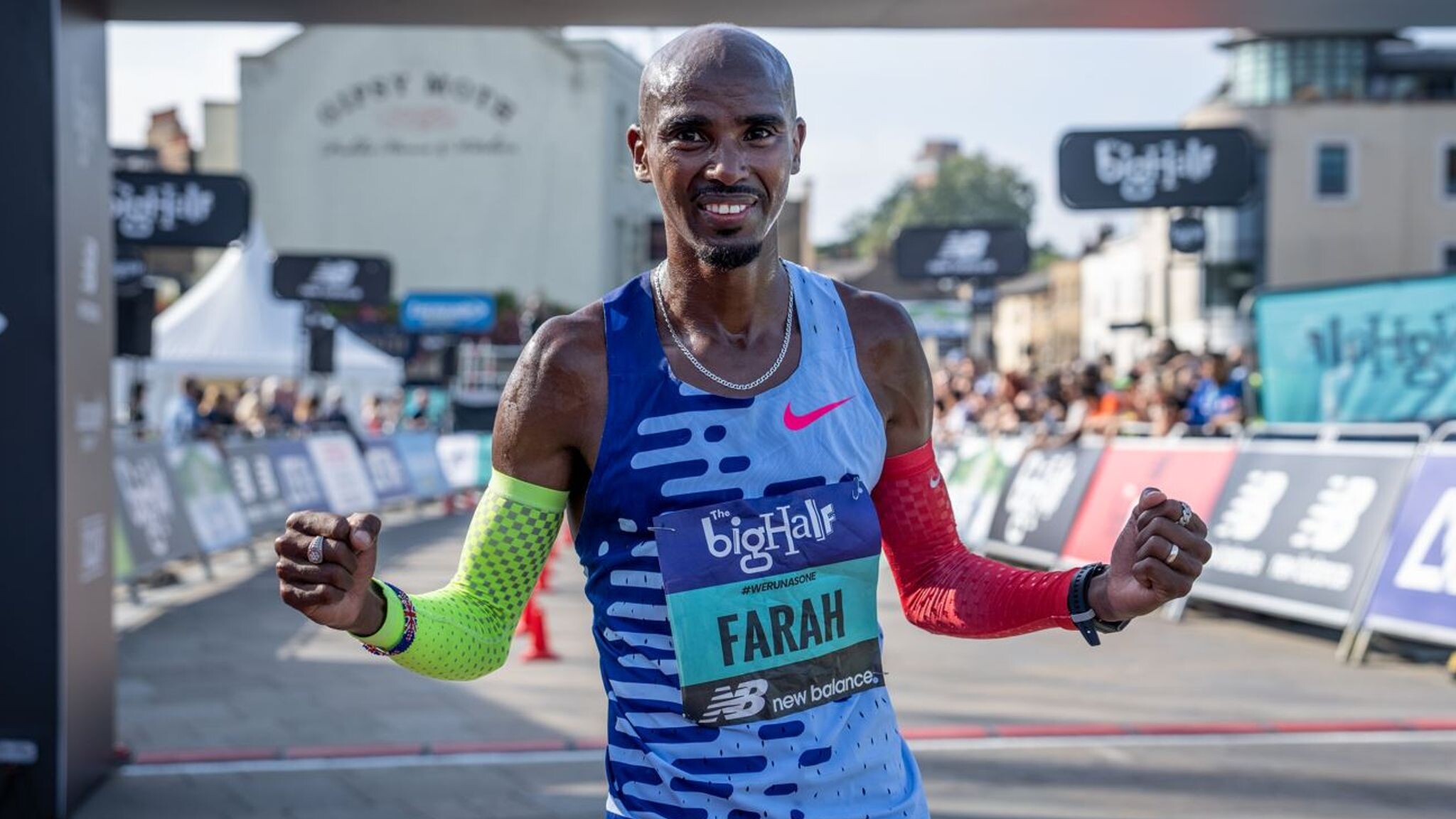
Among the top runners on September 10 will be Sir Mo Farah taking part in his last-ever competitive event. And it's set to prove an emotional occasion for the four-time Olympic gold medalist and six-time World Champion who has won the Great North Run six times.
Sir Mo, who also will be out supporting young runners at Super Saturday events the day before the half-marathon, will be retiring from professional competition once its complete. He said: "It will definitely be emotional but I’m so happy to have the opportunity to celebrate the end of my professional career on that famous finish line.”
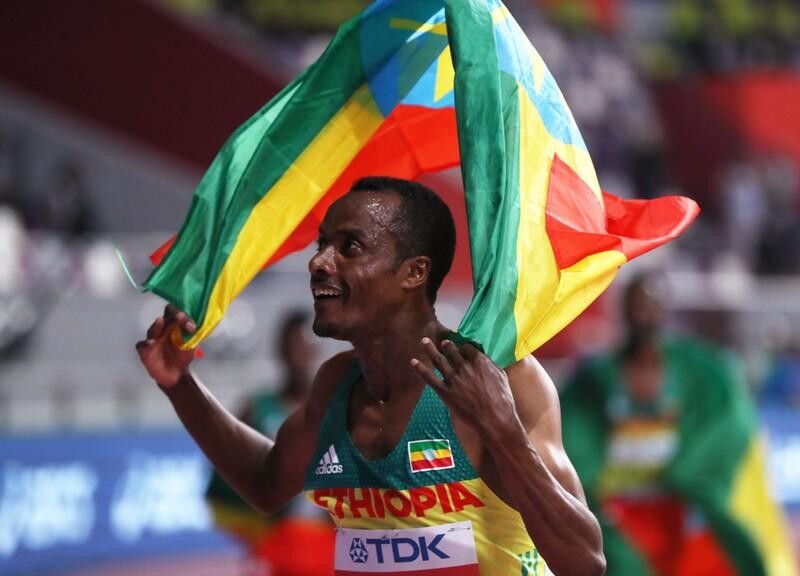
And the event promises to give him a good send-off as he will be in some top company. The line-up for this year's elite men's race now has been revealed and it includes an impressive roster of international athletes.
Among them will be 30-year-old Kenyan Geoffrey Kamworor: a three-time World Half Marathon Champion who has won the New York Marathon twice and came second earlier this year at the London Marathon.
He said: “I’m really looking forward to taking on my first Great North Run in Newcastle - I’ve heard many good things about the event. Sir Mo Farah - he has had such an incredible career, it’s exciting to be a part of his last ever race but I’m obviously here to win and add my name to the list of champions.”
Another big challenger is set to be Muktar Edris from Ethiopia - and he is such an admirer of Sir Mo that he even named his son after the Olympian. Edris is a two-time World Champion over 5,000 meters and has a personal best time of 58.40.
He says: “I’ve raced Mo on the track but this is the first time we have met on the roads. I have great respect for him - after we raced in London 2017 World Championships, I named my son after him."
He adds: "I look forward to renewing our friendship and rivalry." Spectators will be able to watch them in action alongside the other elite runners - and the rest of the 60,000 participants - when the 42nd half-marathon gets under way in Newcastle on September 10, following its traditional route to South Shields where it will be all eyes on the finish line 13.1 miles later.
This year's run, which is due to be broadcast live on BBC1 from 10am until 2pm, is expected to raise around £25m pounds for charity.
(09/04/23) Views: 116Barbara Hodgson
Sir Mo Farah finishes fourth on farewell to London racing at Big Half
Sir Mo Farah bade farewell to racing in London after finishing fourth in his penultimate race at the Big Half on Sunday.
Farah’s last results saw him finish eighth in the Great Manchester Run 10K in May and ninth in the London Marathon the previous month.
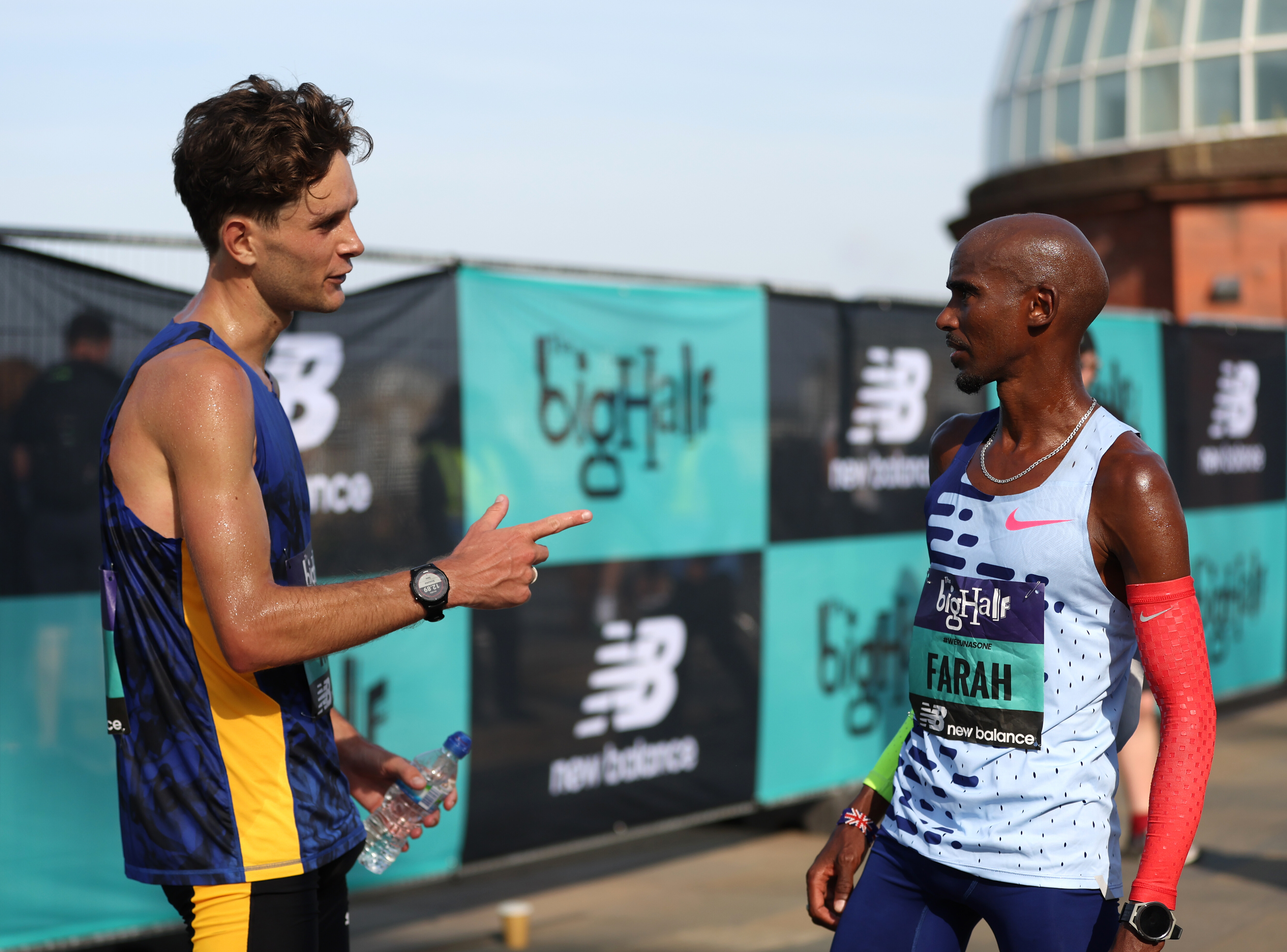
The Big Half was Farah’s last race in London, with the final race of his career taking place at the Great North Run on Tyneside next weekend.
Jack Rowe came first in the elite men’s race with a time of 01:01:08, narrowly edging out fellow Briton Mahamed Mahamed who finished in 01:01:16.
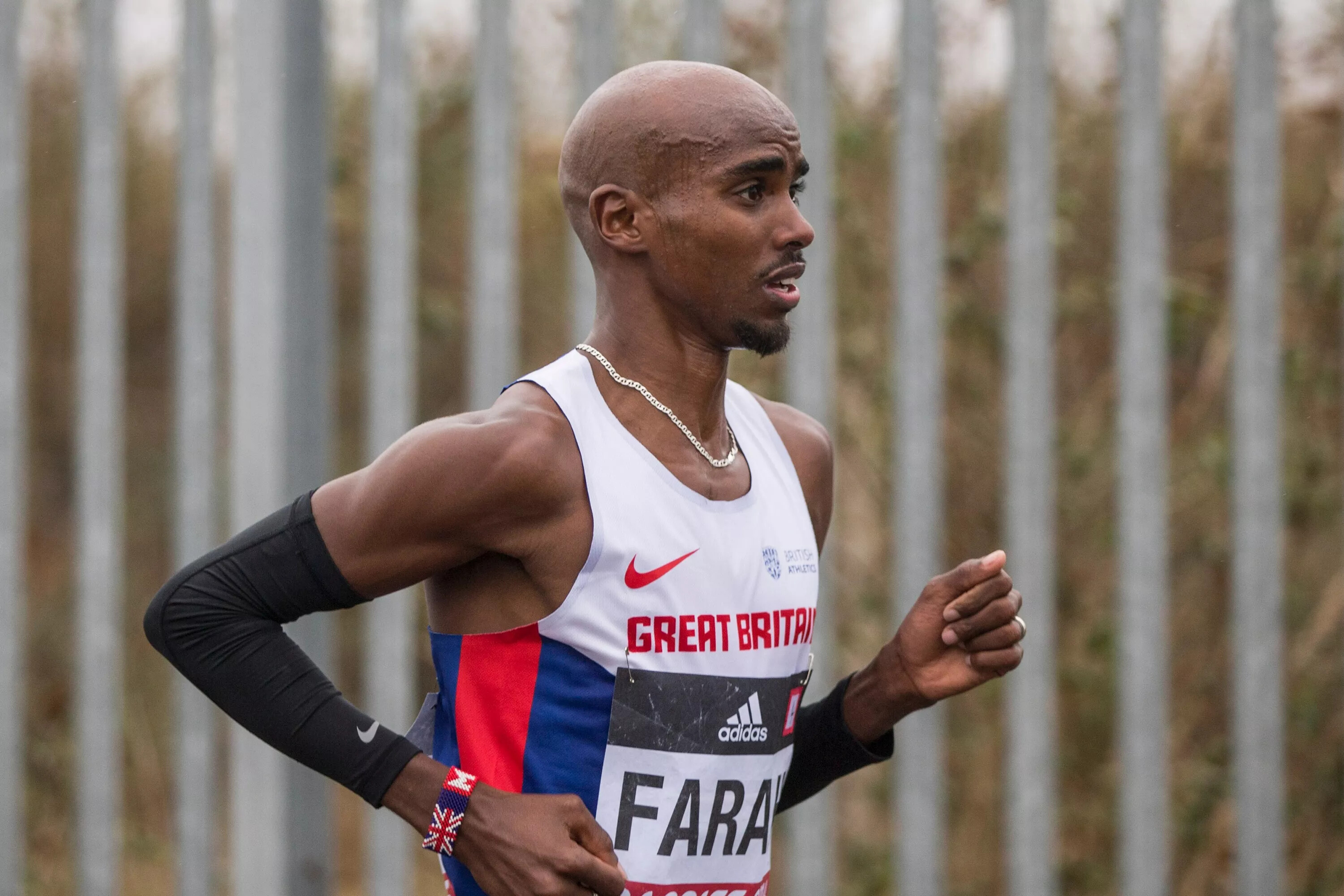
Andrew Butchart was next to cross the line before Farah finished with a time of 01:02:43.
Calli Thackery finished first in the women’s elite race, with David Weir earning the top spot in the wheelchair race.
Farah reflected on an “emotional” day as his career approaches its end next Sunday.
He told BBC Sport: “It was quite emotional today because I haven’t been feeling well this week, I’ve got a bit of a cold.
“I didn’t know if I could do the race, then I was thinking about all the people coming out here and I’m not going to get another chance.
“I came out today, gave it my best but you can’t take anything away from Jack, he’s been working hard for the last three years and he’s deserved that win.
“It’s just nice to see youngsters coming along, grabbing that chance and believing in themselves.
“As I said, when you’ve achieved everything it must come to an end at some point. I’m getting on a bit and I’m kind of just looking forward to taking a break and hopefully being involved in sports, but just spending time with my family.
“Honestly, without the crowd and support I’ve had over the years it wouldn’t be the same.”
(09/04/23) Views: 114Great North Run: 102-year-old walker set to be oldest entrant
At 102-years-old, Bill Cooksey hopes to become the oldest person to finish the Great North Run.
The centenarian, who walks about two miles a day to keep fit, will tackle the half marathon route from Newcastle to South Shields on 10 September.
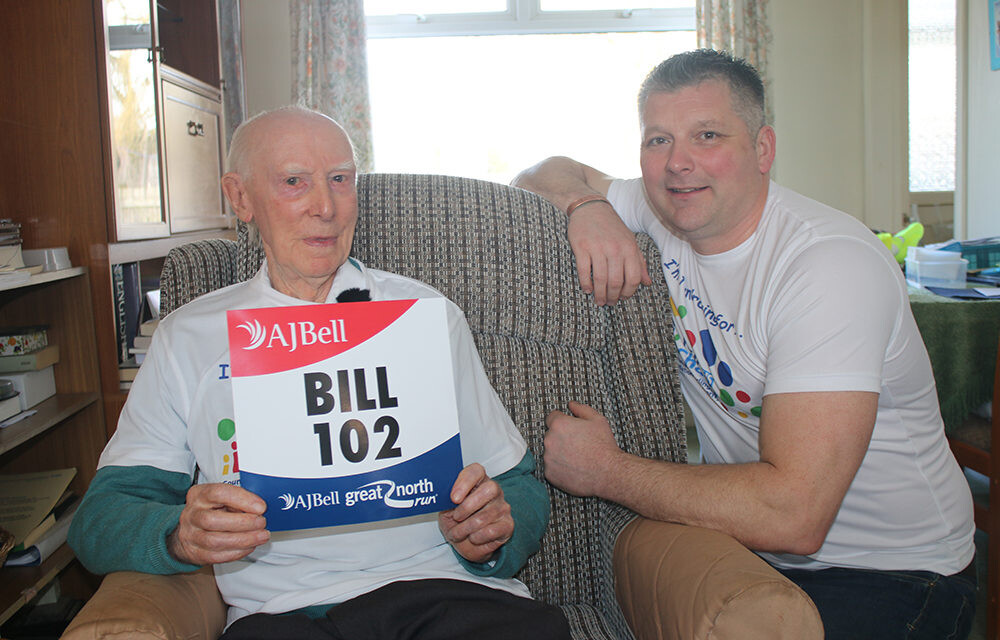
Mr Cooksey, from Newton Aycliffe, County Durham, is raising funds to support his local NHS Trust charity and will be accompanied by two others.
"I hope it will encourage other people to try the same thing," he said.
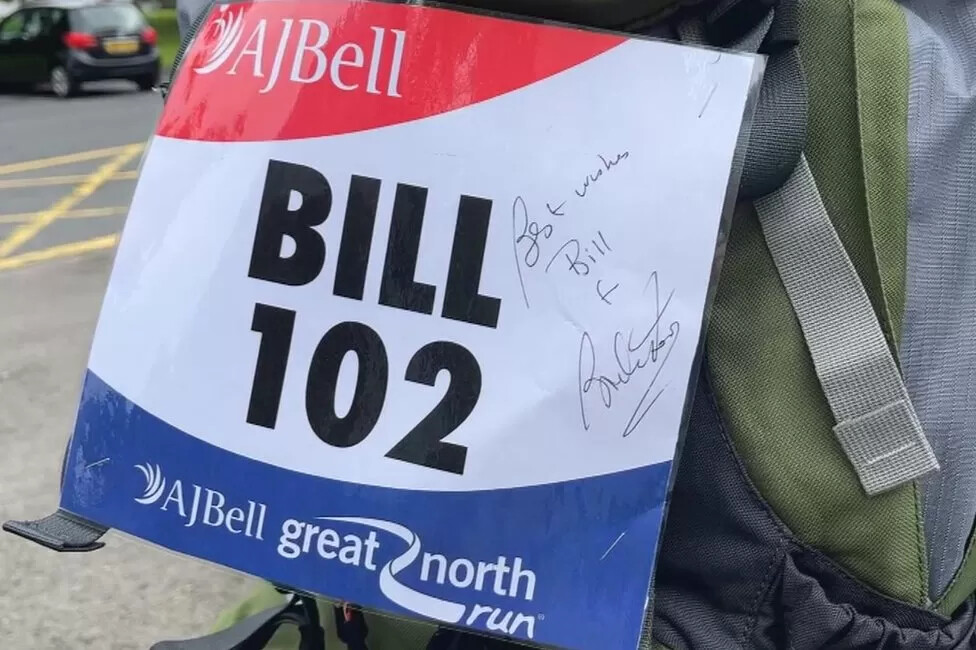
Due to his age, Mr Cooksey will be accompanied by his friend Gavin Hasting and Sue Jacques, chief executive of County Durham and Darlington NHS Trust.
The RAF veteran set himself a challenge of walking 100 miles (161km) when he turned 100 years old, trekking 10 miles a day for 10 days along the Locomotion Way between Newton Aycliffe and Shildon stations.
Not stopping there, the retired teacher clocked up 1,000 miles (1609km) on his tricycle to celebrate his 101st birthday.
He has been given a special Great North Run 102 number, signed by the half marathon's founder Sir Brendan Foster.
"Very often you get to the the same age and say 'that's it, I'm not supposed to be able to do this' but I just carried on as normal and I shall continue to do so until I am forced to stop," Mr Cooksey told BBC Radio Newcastle.
"I don't think that record will stand for long - there will be people out there who are much fitter than I am, and they will decide, 'well if he can do it, I can do it' - and good luck to them," he added.
Mr Cooksey, who was born in Wales, has enjoyed walking since his retirement in 1980.
He recently walked 12 miles (19km) between Seaton Carew and Hartlepool to test his fitness in terms of being able to do the 13.1 mile (21km) course.
The father-of-three encouraged everybody to walk at least two miles a day and has completed all the long-distance paths in Northern England.
"When I am doing an ordinary walk I don't make any attempt of hurrying, I just saunter along," he said, adding: "You go out to walk for solitude and to think about things."
He said he put his good health down to keeping active, as well as a good diet and lifestyle.
"The only thing I regret is having to give up dancing, I think that's another secret to good health," he added.
(09/02/23) Views: 105Andy Watson and Chris Robinson
Three easy steps to more relaxed running form
Ever wish you could run with more ease and smoothness? Whether it’s tight muscles, poor habits or overthinking that leave you feeling stiff and uncomfortable, you too can be gliding effortlessly in three simple steps. Try these a few times on your easy runs, and soon you’ll be doing them naturally. Your friends may start calling you Kipchoge.
1.- Relax your shoulders and arms

Keep your shoulders relaxed and down: tension in your shoulders can lead to neck and upper back discomfort. Keep your hands in a very loose fist (imagine you are holding a delicate potato chip in each hand) and let your arms swing easily and naturally. Once in a while, shake out your arms and shoulders during your run, releasing any tension that has built up and giving yourself a quick reset.
2.- Pay attention to your breath
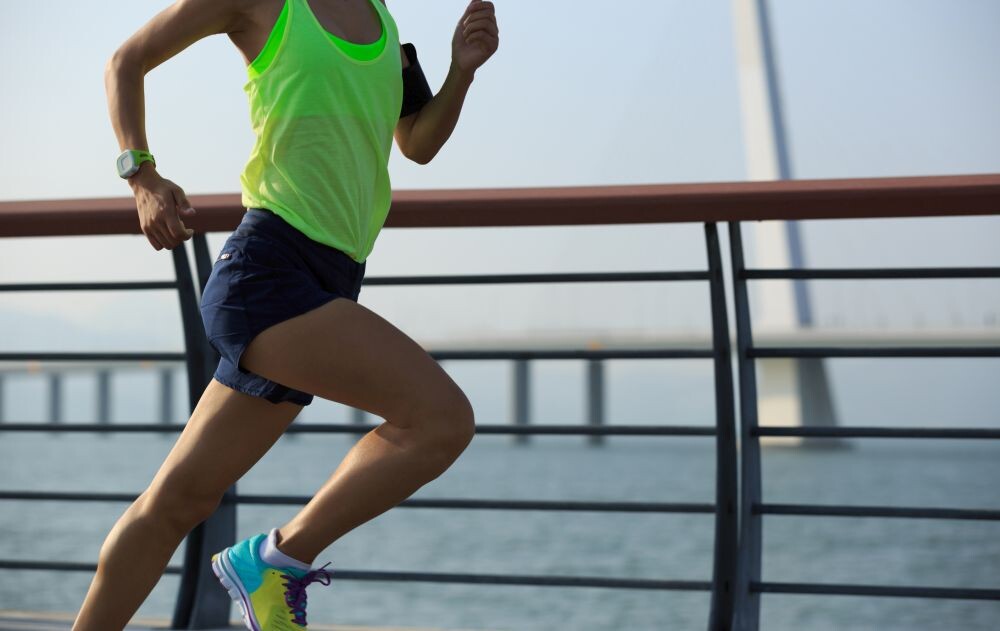
Notice the rhythm of your breath, and try to keep a steady, relaxed pattern. Taking deep breaths through your nose can help calm your entire body and reduce tension. Notice if you’re breathing erratically or shallowly and try practicing diaphragmatic breathing (or “belly breathing”) to release tension that may be accumulating. Start by inhaling deeply through your nose, expanding your diaphragm, and exhaling fully through your mouth or nose. If this is challenging, try practicing for a few moments before or after your run.
3.- Find your stride
While we all have a natural running stride that we gravitate toward, it’s easy to fall into poor habits when fatigue sets in. Aim for a comfortable and efficient stride length, avoiding overstriding or taking excessively long steps–this can lead to tension and soreness in your legs and lower back. Pay attention to your foot strike, and while this subject seems to be forever in debate, a general consensus is that staying light on your feet with a quick turnover is helpful for most of us. Avoid leaning too far forward or backward.
Relaxed running doesn’t mean slouching or flailing about, rather, it means finding a balance–maintaining proper running mechanics and feeling like you are running with ease. Some days this is more challenging than others. If you check-in with your running form regularly, reminding yourself of this quick three-step shakeout, you’ll soon be doing this by habit and zooming fluidly and lightly through your runs.
(09/04/23) Views: 105Keeley Milne
Clayton Young wins 2023 New Haven Road 20K national championship, Emily Sisson wins the women's 20K
The 46th Faxon Law New Haven Road race boasted one of its most impressive fields of runners to date Monday, and it lived up to the hype with a photo finish in the men's 20K national championship race.
Clayton Young was the winner in the 20K, finishing in 59:15, just one second ahead of his training partner and last year's champion, Conner Mantz.
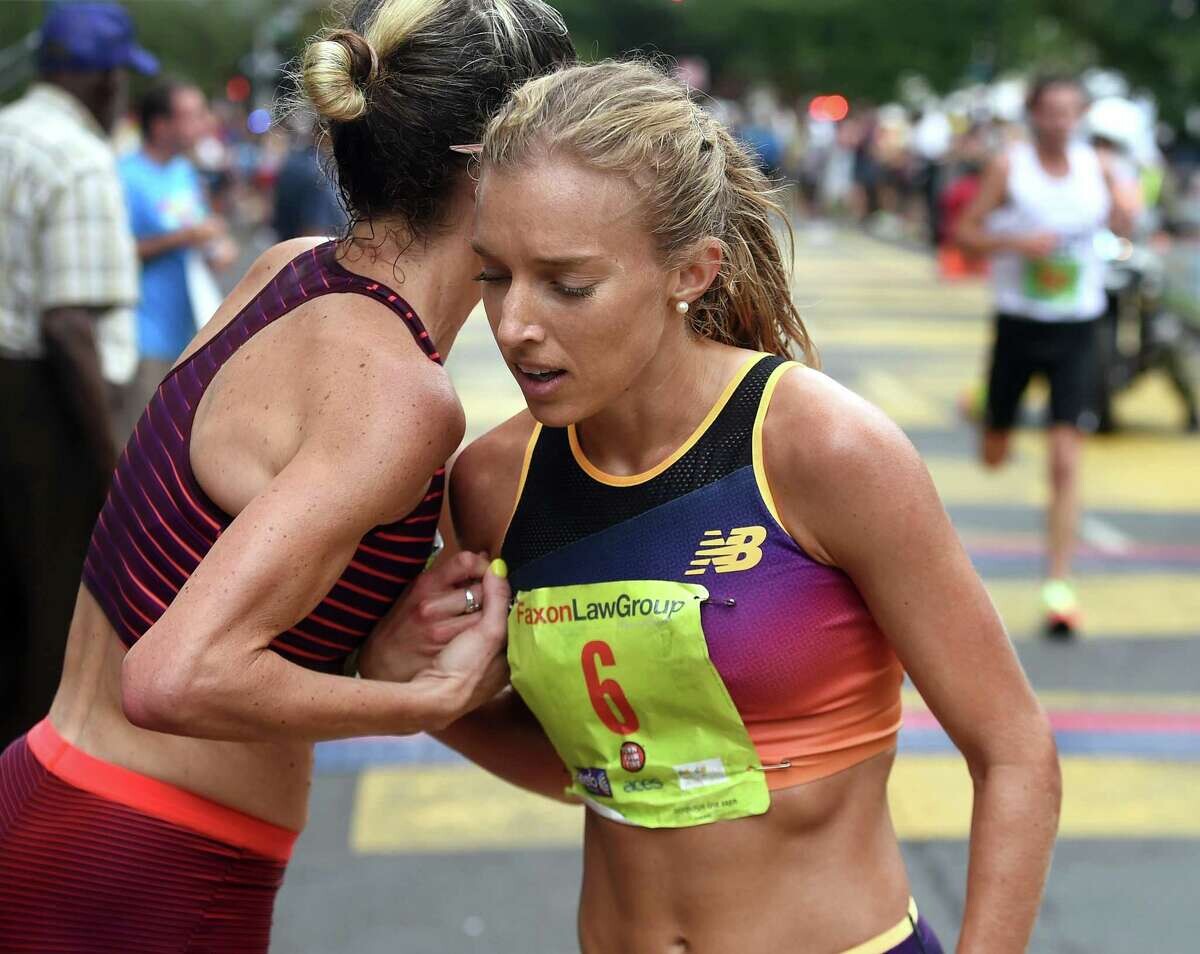
"We both trained in Chicago together, and there was a lot of talk before the race about strategy and what we should do," Young said. "When we were breaking away with about 600 meters to go, I knew I was feeling good and I had a shot, but I also knew that Conner (Mantz) has a deadly kick and he won it last year."
Overall, the road race featured seven Olympians and four past 20K national champions, though this year two new winners were crowned. Emily Sisson won the women's 20K national championship, finishing in 1:06.59.
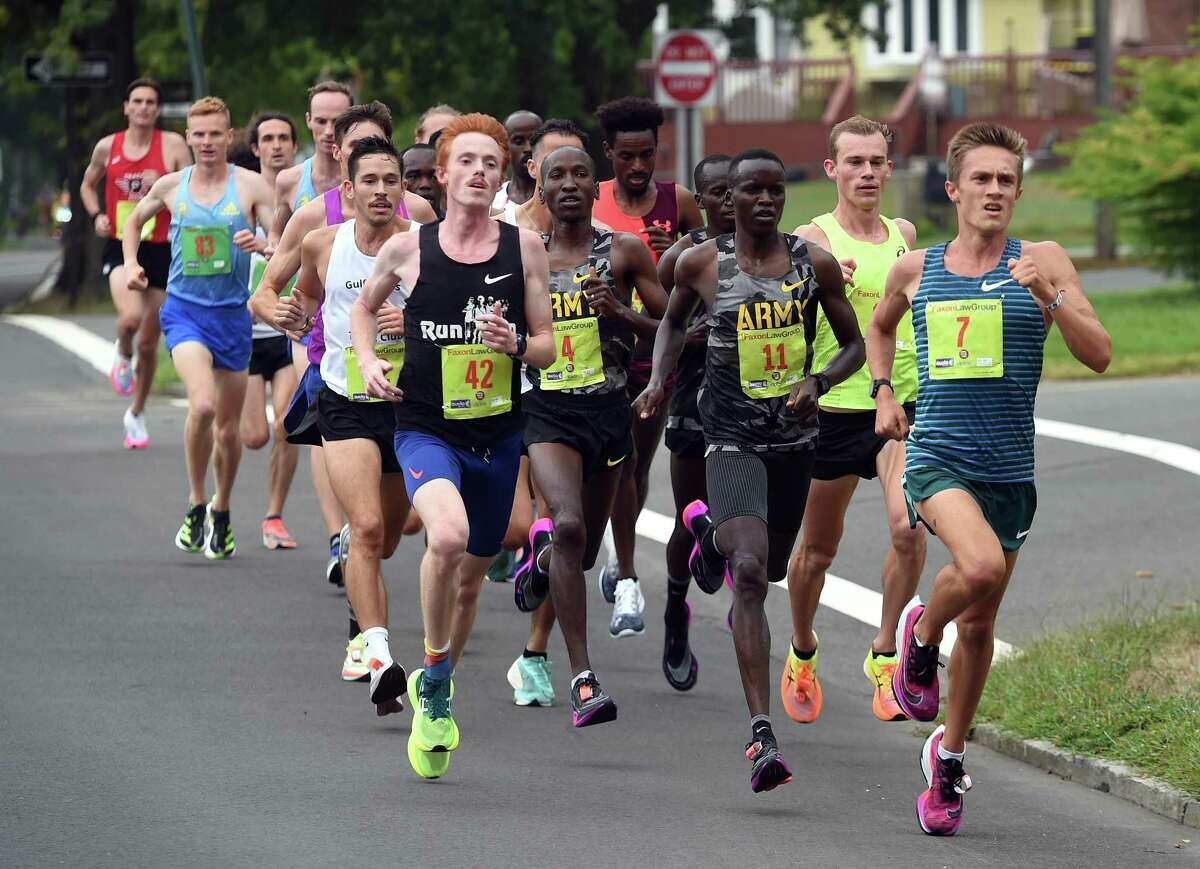
Both runners overcame a confusing segment after the 10 mile mark near East Rock Park as Young started to veer to turn left, leading to Mantz wanting to backtrack.
(09/04/23) Views: 103Will Aldam
Why running with ankle weights is seductive (but dumb)
Any science-fiction buff knows growing up on a high-gravity planet will make you one heck of an athlete here on Earth. Sadly, we can’t yet visit oppressively weighty worlds to train, but that doesn’t stop runners from seeking out challenging environments—like high-altitude trails—to forge fitter bodies and boost performance through adaptation.
As a fledgling runner and diehard sci-fi fan, one of my earliest training mistakes was to try simulating life on a high-gravity planet by running with ankle weights. More shameful than that admission is the fact that I thought I was an absolute genius for attempting it. Our numbers are few, but there is a very thin branch of the running community that has either tried running with ankle weights or is contemplating it. If you’re one of the rare runners thinking of giving it a try, here are some reasons to reconsider.
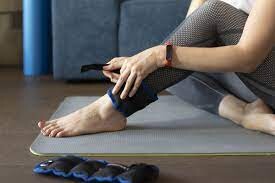
The fantasy doesn’t stack up to the reality
The allure of ankle weights isn’t just about the promise of exponential growth in leg strength and running speed, but the fantasy wrapped around it. Before setting out on my ill-fated ankle-weight test run many years ago, I imagined it being the start of two solid years of secretly wearing ankle weights on all my runs (I’d be doing all my training in billowy harem pants, I guess). I’d slowly but surely grow faster and stronger, to the point where I’d be one of the fastest runners in town, even while wearing the weights.

I also imagined the day I would reveal my secret to a shocked world. I’d race a 100m heat (in front of tens of thousands of spectators—it’s a fantasy, after all), tying the fastest guy in town (who was also about to foreclose on the local orphanage—again, fantasy). For the final, I’d lift the legs of my harem pants to reveal my leg weights to a sea of dropped jaws, cast off my weights as if they were shackles, embarrass the competition with my incredible speed, win the race and save the orphans.
In reality, I only lasted one run with the leg weights—a 5K I bailed on halfway through—and I haven’t run a 100m since Grade 6.
It messes with your running form
Running with dead weight around your ankles is a sure way to throw a couple of heavy wrenches into your running mechanics. By targeting the lower leg muscles and neglecting other muscle groups, running with ankle weights creates muscle imbalance. It also reduces running efficiency and makes it nearly impossible to maintain decent form. When I tried it, I wasn’t running so much as I was speed-stumbling, like an over-caffeinated Frankenstein’s monster.
You’ll hurt yourself and look dumb doing it
I’d love to say my ankle-weight running experiment ended after I experienced a sudden bout of dignity, but it was a rolled ankle that did me in. In hindsight, I’m thankful to have been stopped by an acute injury, rather than suffer more serious and chronic strains, sprains, tears or pulls I surely would have inflicted on myself had I tried sticking with my ankle-weight training plan.
(09/01/23) Views: 95Paul Baswick
Nike launches new Ksh40,000 shoe in honor of world marathon record holder Eliud Kipchoge
Each item in the collection features colors and graphics that pay homage to the start of Kipchoge’s elite racing career.
Nike has introduced the EK Umoja Collection, running footwear and apparel that is built on the ethos of world marathon record holder Eliud Kipchoge.
The collection honors the unifying legacy the two-time Olympic champion has had on the running community through products that all runners can purchase.

As reported by Nike, the collection includes five Nike running footwear silhouettes: the Nike Alphafly 2, Nike Vaporfly 3, Nike Zoom Fly 5, Pegasus 40, and Nike Victory track spike. In apparel, the line includes the Nike Windrunner jacket, Nike Rise 365 tee, Nike Stride 7-inch short, and a Nike Dri-FIT tee.
The Nike Alphafly 2 costs Ksh 40,000, Nike Vaporfly 3 (Ksh 40,000), Nike Zoom Fly 5 (Ksh 22,000), Pegasus 40 (Ksh 20,000), and Nike Victory track spike (Ksh 21,000).

Each item in the collection features colors and graphics that pay homage to the start of Kipchoge’s elite racing career, his first World Championship in the 5,000 meters in Paris in 2003.
The recurring color red represents Kipchoge’s proud Kenyan heritage and nods to the Nike Kenya kit he wore when he won his first gold medal.
The sock liners in the collection footwear, as well as select apparel items, display the official time of his 2003 5,000-meter win: 12:52.79.
A graphic print in Kipchoge’s handwriting reading “No Human is Limited” can be found on the medial midsole of each shoe and on each apparel item.
The Dri-FIT tee features a quote that guides Kipchoge’s optimistic approach to life: “Let us imagine that we are in a garden. Let us focus on the flowers and not the weeds.”
Throughout his 20 years competing at the highest level of the sport, Kipchoge and Nike have propelled their shared purpose to rethink human potential and move the world forward through running.
That forward momentum continues in the new EK Umoja Collection, built on the ethos of the four-time London Marathon.
“‘Umoja’ stands for unity in my native Swahili. This collection represents the work done together as a running family and community,” Kipchoge explained as per Nike.
Together, Nike and Kipchoge are committed to realizing his dream of making this world a running world. As he puts it, “A running world is a healthy world. A running world is a peaceful world. A running world is a joyful world.”
(09/01/23) Views: 93Abigael Wuafula


